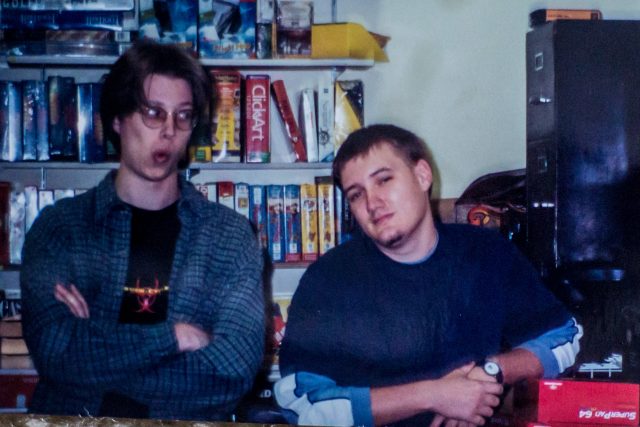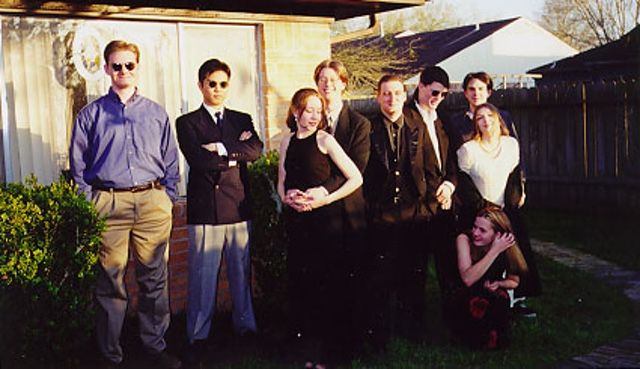
For Christmas of 1994, my family bought a brand new Gateway P5-66 tower. It came equipped with a first generation Pentium processor running at 67MHz (with a now ludicrously large 800 nanometer process size, a startlingly low 16W max TDP, and, yes, the FDIV bug), 8 megabytes of EDO RAM, and a 512MB hard disk drive. It was also the first computer we’d ever had without a 5.25" floppy disk drive—meaning that I had to spend a whole day with our now-obsoleted dual-disked 386DX/25, copying all my files on 5.25" disk to 3.5".
It also came preloaded with Windows 3.1, but even then there were whisperings about Microsoft’s upcoming "Chicago" operating system, which didn’t yet have a formal release name. I’d read the articles in PC Magazine and other contemporary rags. I wasn’t yet cruising the Internet—in fact, I had only a vague conception of what the term "information superhighway" meant—but if I had, I could have read the Chicago speculation there on USENET and maybe even a few primitive, barely functional World Wide Web sites. But on that Christmas day of 1994 as I stared at the Gateway 2000 desktop wallpaper and watched the music videos included on the Gateway 2000 system CD, I felt like I was living the multimedia dream.

Of course, Windows 3.1 was Windows 3.1, with all its weirdness and foibles, and my multimedia dream wasn’t terribly grand even by the standards of the day. I still spent almost all of my time in DOS, since that’s where most of my games and applications ran (including Telemate, my preferred BBS term program). But even as I stuck with the DOS command line I’d grown up with, those whisperings of "Chicago" grew louder and louder. Soon, it was said, Microsoft will release the operating system to end all operating systems. Soon, we’d leave all this text mode stuff behind, ditching our config.sys and autoexec.bat files for good and living full-time in a modern graphical shell. Trumpet Winsock and manual IRQ assignments for hardware and environment variables and careful low memory management will be a thing of the past. Chicago would save us all—not just the crazy-rich (or plain crazy) who could afford to switch to OS/2, but all of us.
We mused about Chicago at Babbage’s, in between goofing off and trying to figure out how to sell surplus Atari Jaguars. We knew that it’d be on our shelves, and we wondered how it might look and feel—and, more importantly, if it would live up to the increasingly high expectations we had. Perched on the eggshell white counters when the store was slow, we speculated about the way the OS would appear at final release (leaked developer screenshots in PC Magazine notwithstanding), what we might be able to do with it, and whether or not we might finally be able to ditch QEMM386 (which, of course, we all used).
The launch approaches
The name "Windows 95" was revealed to the public only a short time before the operating system’s launch, which we were told was going to be a massive event. Through an insanely overwrought but brilliantly successful marketing campaign featuring the Rolling Stones’ "Start Me Up" (which cost a reported $3 million to license) Microsoft managed to convince a whole hell of a lot of people that they needed this "Windows 95" thing—even if they didn’t exactly know what "Window 95" was.
The endless, sweltering August of 1995 unfurled in long late sunsets. I was 17, I had a fast car and a fast computer, and I was invincible and unstoppable—until my high school girlfriend broke up with me. It’s pretty much a requirement of youth, of course—everyone has to have that dumb overwrought teenage break-up to help put later relationships in perspective, but it doesn’t make it hurt any less at the time.
Intertwined in memories of pining after a girl who’d moved on are my memories of my first eyes-on, hands-on demo of Windows 95. The area Microsoft sales representative arrived at Babbage’s one afternoon hauling a dolly overfilled with computer equipment; she dragged it all into our back room, and while the manager watched the store, I shook myself out of teenage breakup funk and followed the other sales associates into the back while the rep set up a state of the art Pentium tower and a huge 21" CRT display.
Remember that 1995 was a time of innocence in computing—a time when the stunning outcome of the "look and feel lawsuit" was still fresh in everyone’s mind. A time when no one outside of a few lunatic kernel hackers had even heard of "Linux." A time when spelling "Microsoft" as "Micro$oft" was still a non-ironic gesture of protest. We were wary of what Redmond had wrought, but we were also certain that whatever we were about to see would blow our socks off.
The green background is the first thing I saw appear on the 21" screen, and that glimpse of sickly green made a lasting impression. Hex color #008080, an institutional color that likely was the result of dozens of rounds of focus testing—it’s so inoffensively drab that it wraps around the other side and becomes offensive again. And yet that color conquered the world’s desktops.The Start Menu and the Explorer shell, of course, were highlights of the demo. Prior to Windows 95, Program Manager ruled the desktop. The idea of an automatically populating hierarchical menu was revolutionary and we loved it. It begged to be explored—what crazy wonders awaited in the Accessories group? Was there, perhaps, a calculator in there? And what does "Character Map" mean?
"Autoplay" impressed the hell out of me. We watched, squinting in anticipation, as the MS rep inserted an application CD into the CD-ROM drive and, after a few seconds of clucking and grinding, the Microsoft Office 95 installer sprang up onto the screen—without having to touch the keyboard! She repeated the feat with an audio CD and music magically began playing.

Probably the feature that impressed me the most was the nascent Device Manager. Though Windows 3.1 had been able to display some information about connected devices and even do some limited configuration, the primary way of managing hardware resources on Windows 3.1 was in DOS, via the config.sys and autoexec.bat files. Windows 95, we saw in our short demo, could actually show you what was going on with your connected devices and even let you fix problems without having to drop out to the command line! It’s difficult to overstate how big a deal this was—when you’ve never before had any kind of central device configuration management, even Windows 95’s device manager looks like magic.
After the demo, I wrote the following in an e-mail dated August 16, 1995, to a fellow Babbage’s employee:
It's cool to watch people conjure up DOS stuff, because of the frenetic typing, cryptic messages, and arcane interfaces...many a time have I mystified people..."What's that? What's he doing?" But, Win95 is more of a Star Trek-style interface...bunches of layering windows popping up at the touch of a button, overlapping things, and twelve tasks going on at once...rates extremely high on the lookability scale.
Clearly, I was sold. This was going to be amazing. I couldn’t wait to get my own copy and get started.
reader comments
159